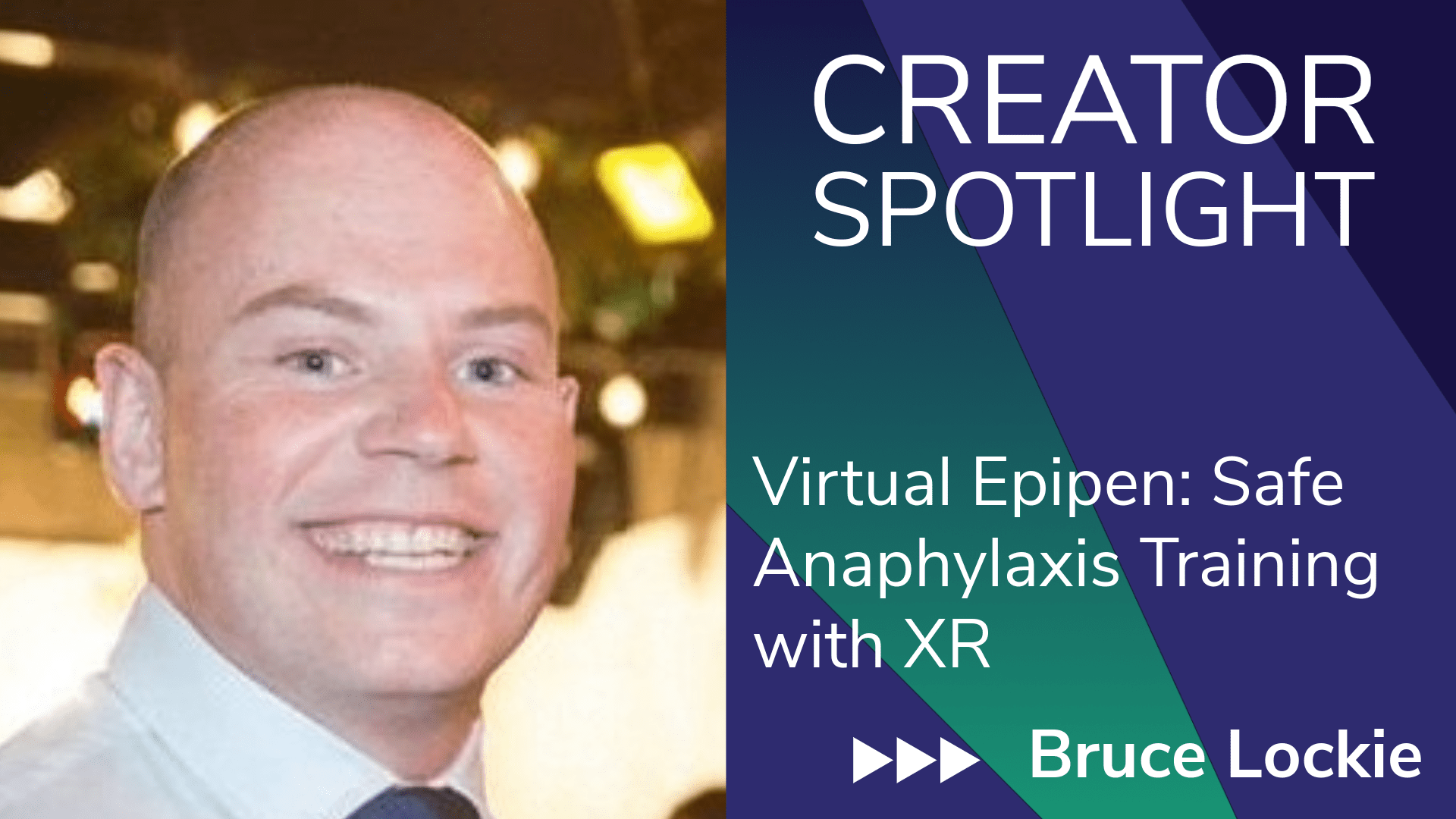
Exploring VR in Higher Education
At the University of Plymouth, VR is being explored across different faculties from computer game design to medical programs, but widespread adoption remains a challenge. Licensing costs, mobile device management, and content creation all make scaling difficult.
That’s where Bruce Lockie saw an opportunity. By joining the Zoe Content Creator Program in his personal time, he set out to learn how VR lessons could be built from scratch—without the prohibitive costs of off-the-shelf packages.
The main thing for me was looking at how easy it is to go from nothing to something.
Building a Prototype: Anaphylaxis Training
For his Zoe project, Bruce chose to focus on anaphylaxis training, creating an experience where learners must:
- Identify a patient suffering from an allergic reaction
- Pick up and correctly administer an EpiPen
- Call emergency services after completing the procedure
His prototype evolved through two stages:
- Guided learning – with text box prompts walking learners through the process.
- Applied knowledge – the prompts are removed, requiring students to rely on memory and understanding.
This balance of support → independence allows learners to build confidence while practicing a vital life-saving skill.
Looking Ahead
For Bruce, his anaphylaxis prototype is just the beginning. He envisions expanding the scenario into more dynamic, real-world simulations where learners aren’t simply handed the answers, but must observe, interpret, and act under pressure.
Imagine a busy environment filled with non-playable characters: one begins showing subtle signs of an allergic reaction, and it’s up to the learner to spot the symptoms, retrieve the EpiPen, and administer it correctly. Distractions, environmental noise, and time pressure could all be layered in to mirror real-life conditions.
What excites Bruce most isn’t just medical training, it’s the flexibility of VR as a medium. Once a foundational simulation is built, the same mechanics can be adapted to countless other scenarios, from workplace safety drills to emergency response training.
Why Create Your Own Lessons?
While pre-built VR packages are convenient, Bruce believes authenticity and relevance are key to educational impact:
- Off-the-shelf lessons may not align with specific course outcomes.
- Bespoke VR activities ensure that learning is directly tied to curriculum goals.
- Students quickly recognize when content lacks authenticity, making custom lessons far more effective.
It needs to be authentic… students will see straight through content that isn’t relevant.
Using Zoe with Unity and MX Ink
Bruce worked with the Zoe for Unity plugin and Logitech’s MX Ink stylus to push his prototype further.
- The Zoe Unity plugin flattened the learning curve, allowing him to build without heavy coding.
- Sample projects and libraries provided quick inspiration and reference points.
- The MX Ink stylus became a creative substitute for an EpiPen—adding realism through haptic feedback and its cylindrical form factor.
Looking Toward the Future of VR in Education
For Bruce, the most exciting part of VR is its constant evolution:
- Hand tracking and haptics are opening new ways to interact.
- Headsets are becoming more affordable and accessible.
- Educators now have the chance to create experiences that go beyond the classroom—simulations, skill-based training, and environments learners couldn’t otherwise access.
Bruce’s work shows how powerful VR can be when educators take the leap into content creation themselves. Whether you want to build medical training simulations, cultural experiences, or skill-based learning, Zoe makes it possible to go from nothing to something—fast.



